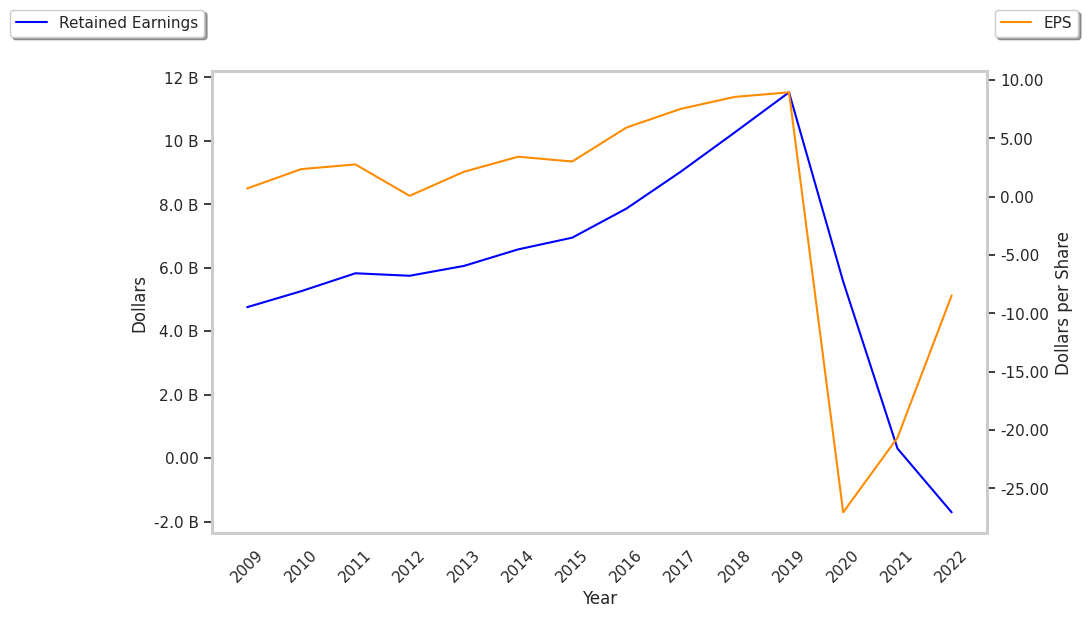Marine Shipping company Royal Caribbean Cruises is taking Wall Street by surprise today, falling to $148.5 and marking a -4.4% change compared to the S&P 500, which moved 0.0%. RCL is -8.54% below its average analyst target price of $162.37, which implies there is more upside for the stock.
As such, the average analyst rates it at buy. Over the last year, Royal Caribbean Cruises shares have outstripped the S&P 500 by 30.0%, with a price change of 53.7%.
Royal Caribbean Cruises Ltd. operates as a cruise company worldwide. The company is a consumer cyclical company, whose sales figures depend on discretionary income levels in its consumer base. For this reason, consumer cyclical companies have better sales and stock performance during periods of economic growth, when consumers have more of an incentive to spend their money on non-essential items.
Royal Caribbean Cruises's trailing 12 month P/E ratio is 18.9, based on its trailing EPS of $7.86. The company has a forward P/E ratio of 11.6 according to its forward EPS of $12.79 -- which is an estimate of what its earnings will look like in the next quarter. As of the second quarter of 2024, the average Price to Earnings (P/E) ratio for US consumer discretionary companies is 22.06, and the S&P 500 has an average of 27.65. The P/E ratio consists in the stock's share price divided by its earnings per share (EPS), representing how much investors are willing to spend for each dollar of the company's earnings. Earnings are the company's revenues minus the cost of goods sold, overhead, and taxes.
A significant limitation with the price to earnings analysis is that it doesn’t account for investors’ growth expectations in the company. For example, a company with a low P/E ratio may not actually be a good value if it has little growth potential. Conversely, companies with high P/E ratios may be fairly valued in terms of growth expectations.
When we divide Royal Caribbean Cruises's P/E ratio by its projected 5 year earnings growth rate, we see that it has a Price to Earnings Growth (PEG) ratio of 0.47. This tells us that the company is largely undervalued in terms of growth expectations -- but remember, these growth expectations could turn out to be wrong!
To deepen our understanding of the company's finances, we should study the effect of its depreciation and capital expenditures on the company's bottom line. We can see the effect of these additional factors in Royal Caribbean Cruises's free cash flow, which was $580.0 Million as of its most recent annual report. Free cash flow represents the amount of money available for reinvestment in the business or for payments to equity investors in the form of a dividend. In RCL's case the cash flow outlook is weak. It's average cash flow over the last 4 years has been $-1823828333.3 and they've been growing at an average rate of 17.8%.
Value investors often analyze stocks through the lens of its Price to Book (P/B) Ratio (its share price divided by its book value). The book value refers to the present value of the company if the company were to sell off all of its assets and pay all of its debts today - a number whose value may differ significantly depending on the accounting method. Royal caribbean cruises's P/B ratio is 7.42 -- in other words, the market value of the company exceeds its book value by a factor of more than 7, so the company's assets may be overvalued compared to the average P/B ratio of the Consumer Discretionary sector, which stands at 3.18 as of the second quarter of 2024.
Since it has a Very low P/E ratio, a higher than Average P/B Ratio, and negative cash flows with an upwards trend, Royal Caribbean Cruises is likely fairly valued at today's prices. The company has poor growth indicators because of an inflated PEG ratio and weak operating margins with a stable trend. We hope you enjoyed this overview of RCL's fundamentals. Be sure to check the numbers for yourself, especially focusing on their trends over the last few years.



